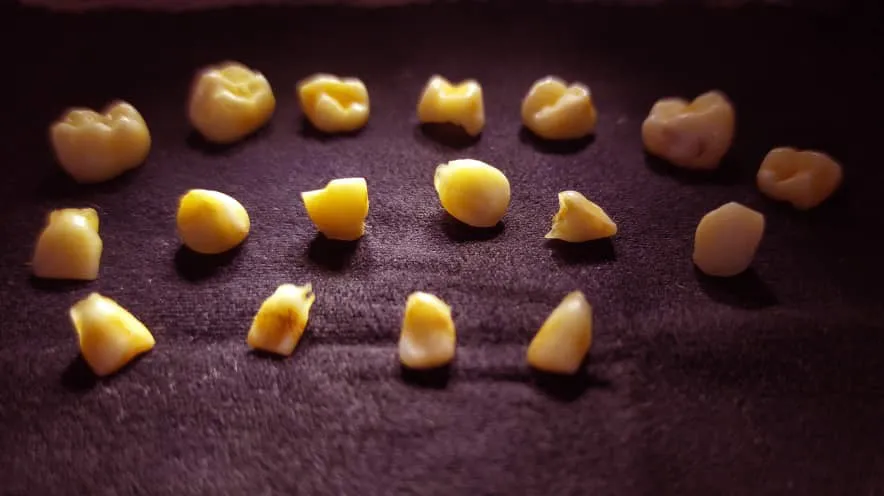
¿Quién conserva los dientes de leche de sus hijos?
Con esta pregunta lanzada a todos en #Hive, y a nuestra comunidad de #HiveCuba inicio este post. Pues sí, mi esposa y yo, conservamos los dientes de leche de nuestros dos hijos.
Dejo claro, que aunque me gusta el coleccionismo, no me dedico a coleccionar dientes, pero hemos conservado, algunas piezas dentales de Andrés y Favio.
Al verlos, acariciamos los recuerdos de esa hermosa etapa que es de gran importancia para toda familia.
Mi madre guardaba los dientes de mi hermana y los míos. Así que la influencia vino de cerca, para que repitiéramos ese detalle.
Who keeps your children's baby teeth?
With this question thrown out to everyone at #Hive, and to our #HiveCuba community I start this post. Well yes, my wife and I, we keep the baby teeth of our two children.
I make it clear that although I like collecting, I am not dedicated to collecting teeth, but we have preserved some of Andrés and Favio's teeth.
When we see them, we cherish the memories of that beautiful stage that is of great importance for every family.
My mother kept my sister's teeth and mine. So the influence came from close by, for us to repeat that detail.
¿Qué son y por qué se llaman dientes de leche?
El nombre de dientes de leche es porque su color es más blanco que los dientes definitivos.
Generalmente, permanecen durante un tiempo limitado en nuestra boca, y se caen cuando los dientes definitivos abren paso en las encías.
Me referí a generalmente, porque no siempre se caen solos. De niño sufrí bastante por ellos. Las raíces de mis dientes siempre han sido grandes y fuertes, y tenían que extraérmelos con esas pinzas parecidas al pico de un halcón.
Si hay un denominador común en el criterio de las personas, es la aversión de estar en el sillón reclinable de un dentista. Ver esa jeringuilla metálica, con su aguja larga, me asemeja a un objeto de tortura como los que se usaban en el Tercer Reich.
Peor, sentir el sonido del taladro odontológico, que causa neuralgia ocasional, y que sumado al olor a eugenol, abraza el aire del lugar, haciendo crispar los nervios.
What are they and why are they called baby teeth?
The name baby teeth is because their color is whiter than permanent teeth.
Generally, they remain for a limited time in our mouth, and fall out when the permanent teeth break through the gums.
I said generally, because they did not fall out on their own. I suffered quite a bit from them as a child. The roots of my teeth have always been big and strong, and they had to be pulled out with those falcon beak-like tweezers.
If there is a common denominator in people's judgment, it is the dislike of being in a dentist's reclining chair. Seeing that metal syringe, with its long needle, resembles to me an object of torture like those used in the Third Reich.
Worse, to feel the sound of the dental drill, which causes occasional neuralgia, and which, added to the smell of eugenol, embraces the air of the place, making the nerves tingle.
Los dientes de Andrés
Andres' teeth
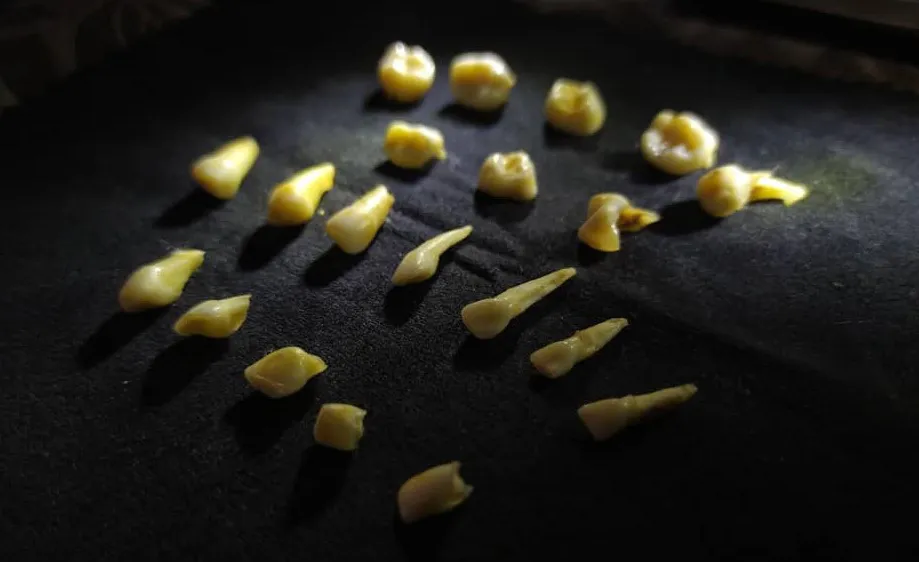
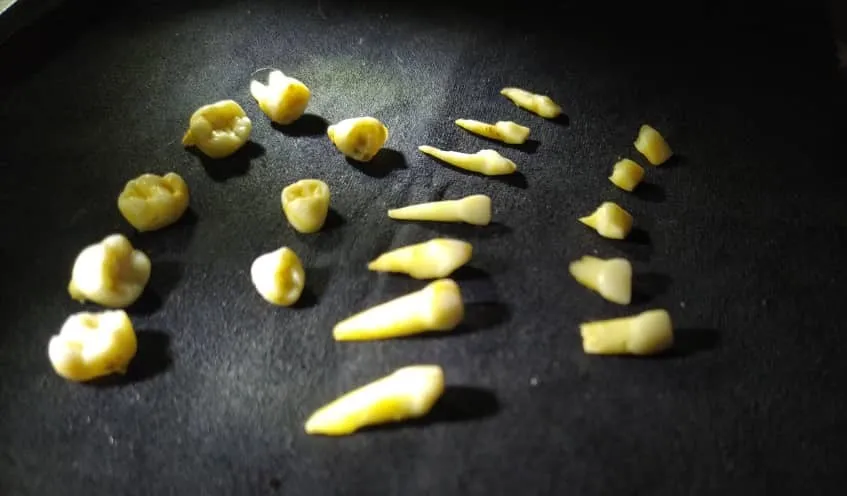
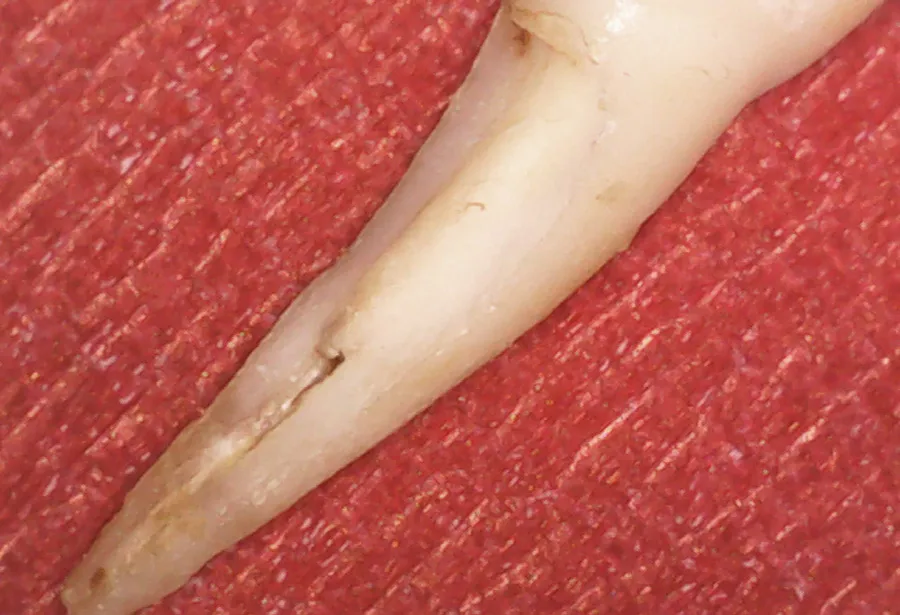
En esta imagen tomada con un Microscopio Digital, pueden ver el largo de su raíz/In this image taken with a Digital Microscope, you can see the length of its root
Casi siempre, los dientes de leche brotan en un período que va desde los 5 meses, hasta el año de vida; y se empiezan a caer a partir de los 5 años. A los 13 años, la mayoría de los niños contarán con sus 28 dientes permanentes.
Con el tiempo le saldrán los cordales (terceros molares), conocidos popularmente como “muelas del juicio”. Nombre debido a que salen de 16 a 25 años. Una edad que supone cierta madurez, completándose su dentición total de 32 piezas.
Pero en cuestiones de fisiología y salud, nada es absoluto. Andrés mantiene un colmillo de diente de leche. Al hacerle la radiografía en la zona, pudimos ver que nunca tuvo el diente permanente que remplazara al temporal.
Por lo regular, son 20 dientes de leche. Estos son lisos en su pared inferior, a diferencia de los permanentes, que son más rugosos.
Most of the time, baby teeth erupt between 5 months and 1 year of age, and begin to fall out by the age of 5. By age 13, most children will have 28 permanent teeth.
Eventually the third molars, popularly known as "wisdom teeth", will erupt. This name is due to the fact that they erupt between the ages of 16 and 25. An age that supposes a certain maturity, completing its total dentition of 32 pieces.
But in matters of physiology and health, nothing is absolute. Andres keeps a baby tooth fang. When he was x-rayed in the area, we could see that he never had the permanent tooth to replace the temporary one.
There are usually 20 baby teeth. They are smooth on their lower wall, unlike permanent teeth, which are rougher.
Los dientes de Favio
Mi hijo menor no tuvo el mismo problema que Andrés, que heredó de su papá esas raíces largas.
Sus dientes temporales se cayeron solos sin contratiempos.
Favio's teeth
My youngest son did not have the same problem as Andrés, who inherited those long roots from his father.
His primary teeth fell out on their own without mishap.
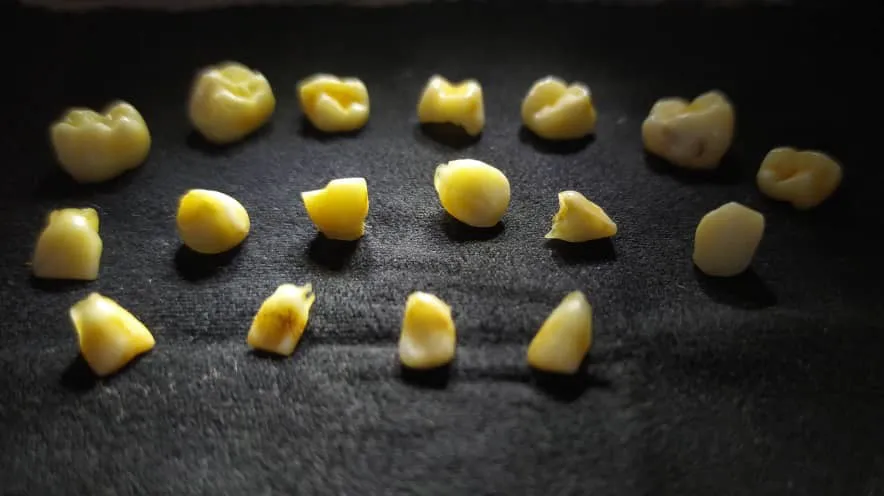
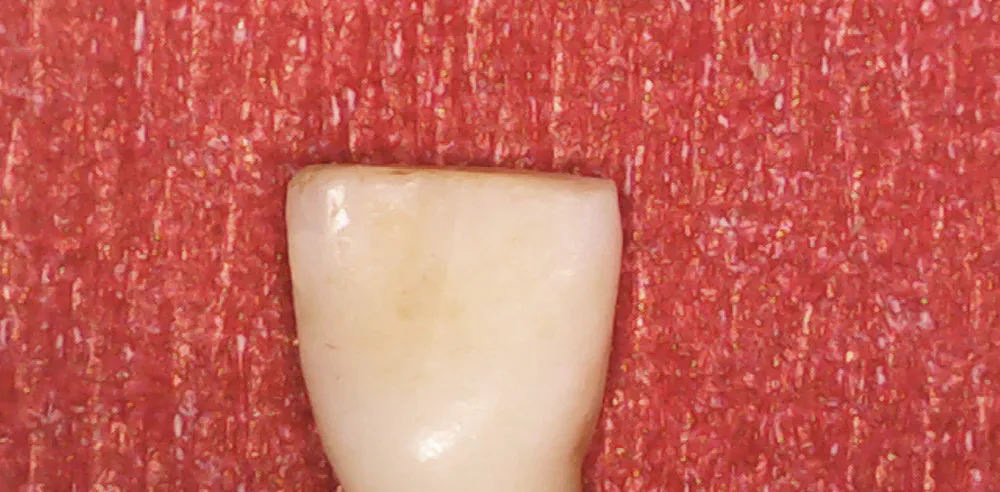
Imagen de un Incisivo temporal de Favio, tomada con Microscopio Digital/Image of a Favio temporal incisor, taken with a Digital Microscope
Funciones de los dientes temporales:
Masticación de los alimentos
Lograr desarrollo y fuerza mandibular
Importantes para la estética al sonreír
Ayudan en el mecanismo del habla
Marca el espacio y la alineación adecuada a los dientes permanentes
¿Por qué es bueno conservarlos?
Aparte del aspecto emocional de conservar los dientes de leche de nuestros hijos. Desde el punto de vista científico, y según estudios del Centro Nacional de Biotecnología de Estados Unidos, es bueno conservar estos dientes, porque su pulpa dental contiene cantidades suficientes de células madre, útiles para la regeneración de células, tejidos y órganos del cuerpo.
Para finalizar este post, no puede faltar otro miembro de nuestra familia. Un diente que se le cayó a nuestro querido perro, cuando era un cachorro.
Functions of the primary teeth:
Chewing food
Achieving jaw development and strength
Important for aesthetics when smiling
Assist in speech mechanism
Provide proper spacing and alignment for permanent teeth
Why is it good to keep them?
Apart from the emotional aspect of preserving our children's baby teeth. From a scientific point of view, and according to studies by the US National Center for Biotechnology, it is good to keep these teeth, because their dental pulp contains sufficient quantities of stem cells, useful for the regeneration of cells, tissues and organs of the body.
To finish this post, we cannot miss another member of our family. A tooth that fell out to our beloved dog, when he was a puppy.
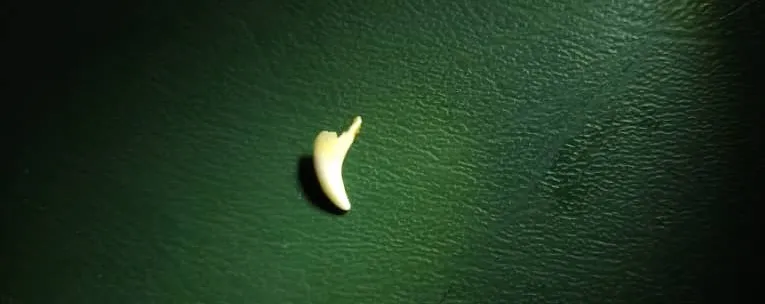
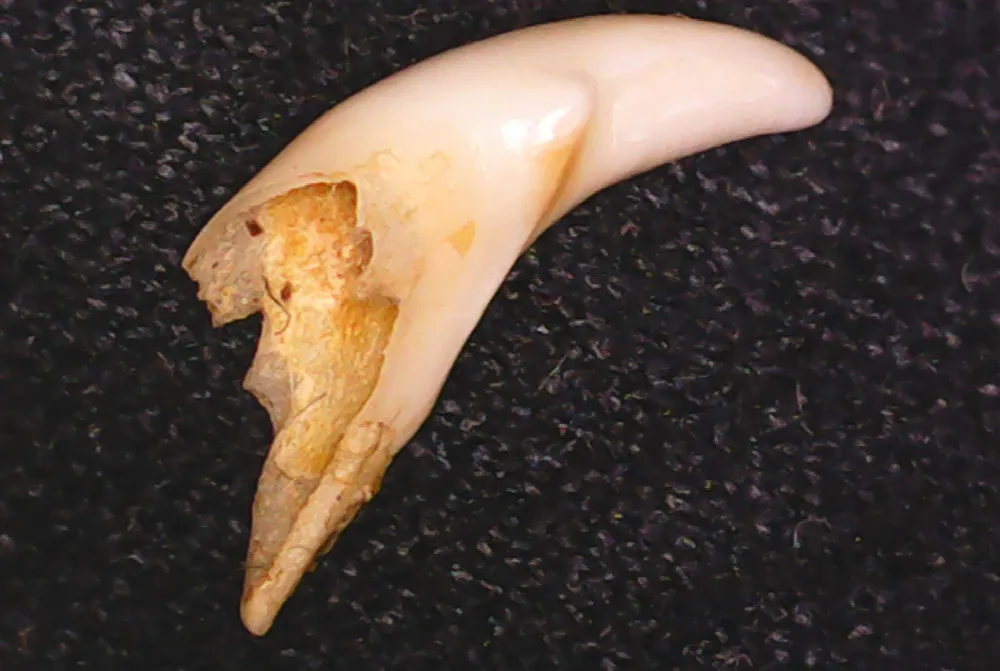
Imagen vista desde el Microscopio Digital/Image seen from the Digital Microscope
Gracias a los que leyeron el post. Les deseo un bonito inicio de semana.
Thanks to those who read the post. I wish you a good start of the week.

Fotos propias. Cámaras usadas/Own photos. Used cameras: Panasonic Lumix model DMC-ZS100 and ELIKLIV Digital Microcope model EDM4S
Separador/text divider. Free use from @eve66
Texto por/Text by Andrés Brunet
Gracias por leer/Thank you for reading
Bienvenidos sus comentarios/Welcome your comments
¡Saludos infinitos!/Infinite greetings!